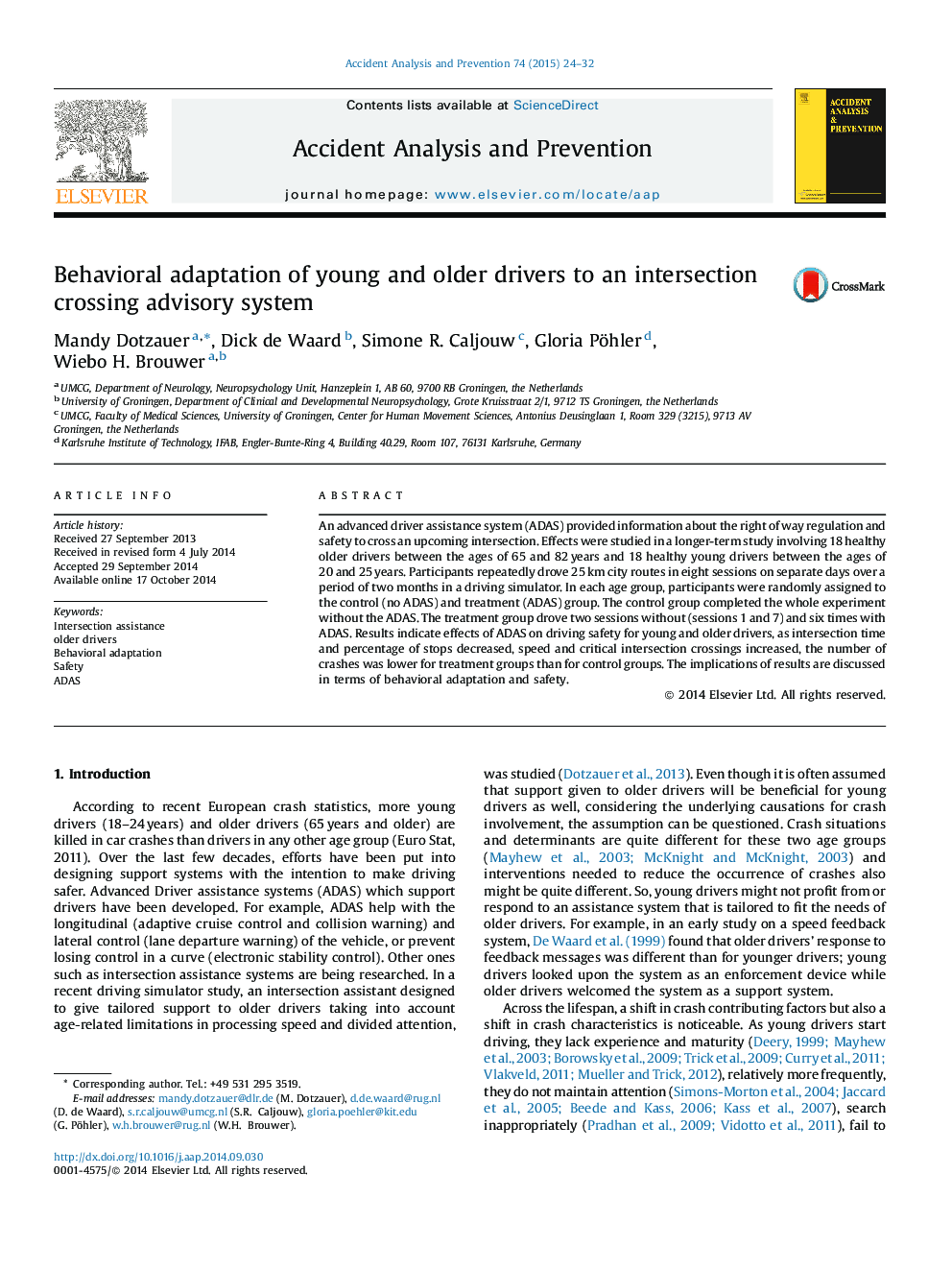| Article ID | Journal | Published Year | Pages | File Type |
|---|---|---|---|---|
| 6965757 | Accident Analysis & Prevention | 2015 | 9 Pages |
Abstract
An advanced driver assistance system (ADAS) provided information about the right of way regulation and safety to cross an upcoming intersection. Effects were studied in a longer-term study involving 18 healthy older drivers between the ages of 65 and 82Â years and 18 healthy young drivers between the ages of 20 and 25Â years. Participants repeatedly drove 25Â km city routes in eight sessions on separate days over a period of two months in a driving simulator. In each age group, participants were randomly assigned to the control (no ADAS) and treatment (ADAS) group. The control group completed the whole experiment without the ADAS. The treatment group drove two sessions without (sessions 1 and 7) and six times with ADAS. Results indicate effects of ADAS on driving safety for young and older drivers, as intersection time and percentage of stops decreased, speed and critical intersection crossings increased, the number of crashes was lower for treatment groups than for control groups. The implications of results are discussed in terms of behavioral adaptation and safety.
Related Topics
Physical Sciences and Engineering
Chemical Engineering
Chemical Health and Safety
Authors
Mandy Dotzauer, Dick de Waard, Simone R. Caljouw, Gloria Pöhler, Wiebo H. Brouwer,
